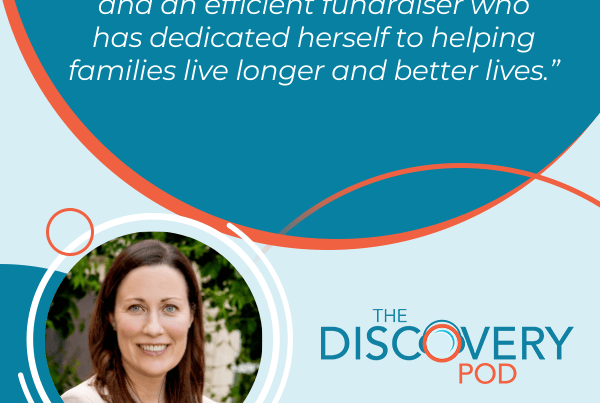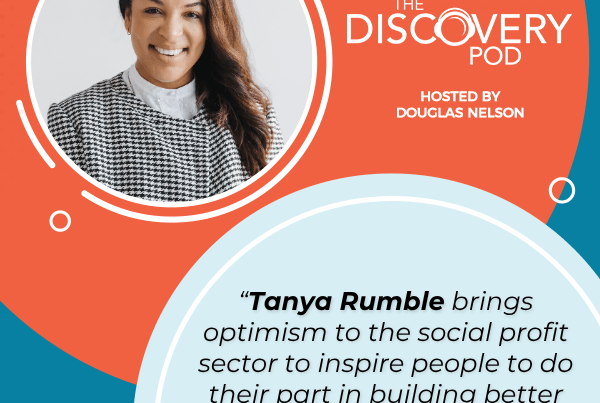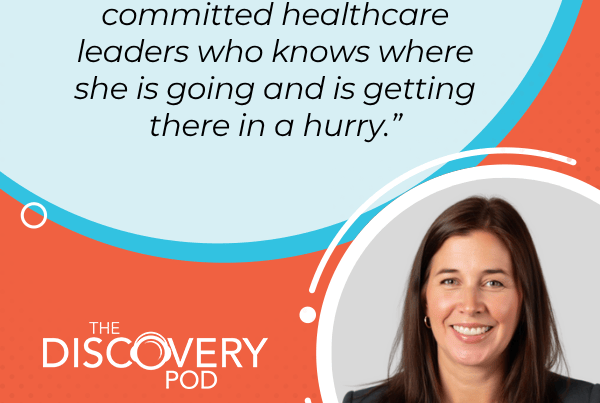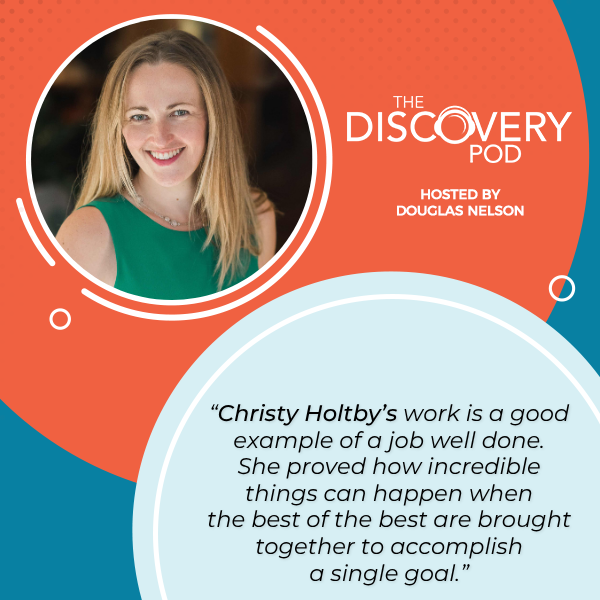
Douglas Nelson visits his hometown Calgary, Alberta and sits down with Christy Holtby, Vice President of Development of the Alberta Cancer Foundation. She talks about the billion-dollar partnership between their foundation, the Government of Alberta, and Siemens Healthineers, aimed at significantly investing in Alberta’s healthcare system. Christy looks back on how this groundbreaking partnership came together and how it could potentially elevate cancer care and research. She also explores their recent fundraising campaigns and the importance of aligning stakeholders and donors with a single, purpose-driven goal.
—
Listen to the podcast here
Alberta Cancer Foundation With Christy Holtby, Vice President, Philanthropy
Welcome to this very special edition of the show. This episode was live in Calgary, Alberta on May 27th, 2025. It’s part of the partnership conference put on by Brad Hoffman in greater purpose. It was an exceptional two days of conversation, collaboration and discussion about the essential role that partnerships play in our social profit sector.
As a part of that conference, I was able to sit down with Christy Holtby, Vice President of Development of the Alberta Cancer Foundation who shared her perspective on a vital partnership that she and her colleagues have been able to convene that may result in more than $1 billion being invested into the healthcare system in the Province of Alberta. A great conversation and a great sense of humor. We’re pleased to be able to share it with you. Please enjoy my conversation with Christy Holtby.
—
We are thrilled to be doing episode 289 at the partnership conference in beautiful Calgary, Alberta, my hometown and the place where all the animals are at the Calgary Zoo. I am so pleased to be here with my friend and colleague Christy Holtby who’s going to tell an amazing story of a partnership that sets a new standard for the community for our sector. It’s something that we wanted to end the day with because it’s exciting to get you talking as you move in to the reception that follows. Christy, welcome to the show.
Thank you. I’m very excited to be here, Doug.
A Billion-Dollar Partnership
Christy, we normally start these conversations with a long bio. We provided that in the background, so I want to jump in. Christy, what happened on March, 21st of 2025?
We announced a billion-dollar partnership between the Government of Alberta, Siemens Healthineers and the Alberta Cancer Foundation.
We’re going to get into what that makes up that billion-dollar the role that the ACF played in that. I’m curious. Could you share, was there anything else that was going on at the Alberta Cancer Foundation while you were negotiating this partnership?
We were wrapping a $250 million campaign for the Arthur J.E. Child Comprehensive Cancer Centre but as overachievers, we raise $298 million and still willing to go up to $300 million if anyone wants to do that. We just wrapped a $30 million dollar campaign for the Cross Cancer Institute. As our cities like to do, a little healthy competition between Edmonton and Calgary, and that sparked a lot of philanthropy.
It’s an important context of the tremendous success of the campaigns, but positioning the foundation at the center of the healthcare conversation in the province. You got to the center of another conversation which is bringing the government and Siemens together to have a conversation. What was a partnership for? What was a billion dollars for?
The partnership focuses in four pillars. There is a significant procurement element. We knew that there is an incredible opportunity for Albertans to have access to the latest technology and equipment to treat cancer. We’re going to have to buy equipment for our hospitals but what if we partnered with someone who would choose to reinvest into our province by the establishment of a center of excellence in artificial intelligence in oncology and a center of excellence in learning? How are we going to train the workforce of the future? A $72 million research and Innovation collaboration. There’s a couple of chairs thrown in there, too. It’s pretty exciting as to what this is going to mean for cancer care and research in this province.
One of the things that was remarkable to me and one of the reasons why I wanted to have this conversation was that when the announcement was made, it was a story about a government partnership with an industry partner. Alberta Cancer Foundation is mentioned but certainly not centered. One of the things we often talk about in our sector and our work that we get to do with clients at the Discovery Group. It’s often, how do we convene as the social profits in our sector? How do we bring people together?
Convening as an end in itself can sometimes feel good. We can feel like we’re doing our work well but it can be hard to measure the impact of that. It can be hard to measure the results. The other part of these kinds of collaborations that I hope we’ll get to. Often, this convening, particularly with industry partners is under the guise of diversifying the revenue stream. We have conventional flaunter B, grants, corporate partnerships, and standard issues corporate partnerships. Boards and CEOs are saying, “We need to diversify our revenue stream. We need to find a new way to fund our work.”
These kinds of innovative partnerships come up as a, “Let’s try this or let’s start our own business or let’s do a back-office enterprise where we do all of the advancement services for all the charities in Alberta.” I know several of you in this room have had board members with that particularly terrible idea. This is a different a revenue stream this generated, because it doesn’t flow directly to the Alberta Cancer Foundation.
Not all of it. Some of it flows. This is a greater good. This is a bigger piece of a bigger pie conversation. When you talk about trust and impact, this is a place where our sector can truly shine because we are held to standards that other sectors are not but we are trusted and we do deliver on impact. Our number one metric is impact. It’s about raising the right dollars for the right purpose. This was the right thing to do for cancer care.
There’s procurement in there for sure. Siemens and the Government of Alberta are giving the money for the research and innovation collaboration to the Alberta Cancer Foundation as the trusted third party. We’ve got the governance structures and the practices. We just raised $300 million. We were qualified to manage that investment.
It is a unique revenue stream but it also means that it is a third. We have to fundraise for our third of that but every donor dollar will be leveraged by industry and by government. When you talk about impact, that’s an awesome validation if industry is interested and if government is interested. I’d have high trust if I was the donor saying, “I want in on that.”
I want to come back to the donors but before we get into the conversations with donors and how this change the way you talk to your donors. One of the other important pieces to share is how fast this partnership came together, so a billion dollars. Have you been working on this for 8 or 9 years?
We signed an MOU in 89 days and we signed the whole deal in 364 days.
Setting Momentum And A Sense Of Pride
A year less a day. It sounds like a prison sentence but not. A year less a day, a billion-dollar investment. How did you and your colleagues at the Alberta Cancer Foundation inject the momentum and the energy to keep those conversations going?
Arguably, fundraisers are good listeners. We’re at the table trying to figure out the intention the motivations of our donors. Honestly, we listened and the team from Siemens Healthineers said pace was important. When they tell you something, believe it. We said uniquely, we can be nimble. We get it. We can bring people to very round tables where they can put their ideas on the table and feel safe in doing that and we found a starting point. We all had to shared vision. One of these slides says, imagine a world without fear of cancer. We do. That’s what happened when we walked into their headquarters. It’s like, “Our values are aligned. We all have a shared vision. It’s not hard to push pace.”
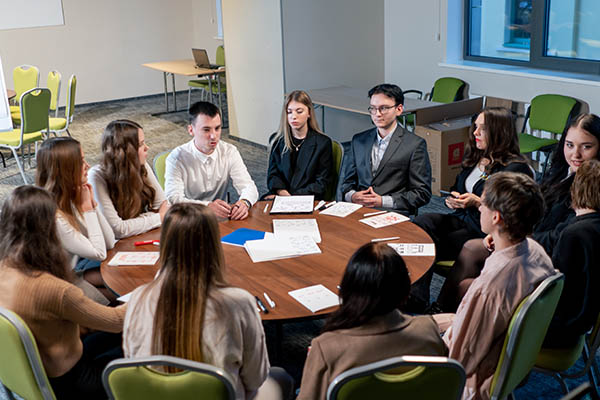
Billion-Dollar Partnership: We can bring people to round tables where they can present ideas and feel safe in doing so. That is a good starting point and a great way to create a shared vision.
One of the things about conference presentations that I recall having gone to them. For my entire professional life is often you hear the A to B. We had an idea and then we were successful. Aren’t we awesome? Which, Christy, if it was true of anyone, it would be true of you but I suspect it wasn’t a straight line. Again, you’re working within it major international corporation, a provincial government that has a lot of different priorities and thinking about how healthcare in a lot of different ways. How did you keep the focus on something that partners wanted pace but nobody’s accountable for that pace?
When you sign something after 89 days and stand at a podium, there is a level of accountability that you need to do something with that. It was all telling stories of patient impact and opportunity throughout that narrative and sustainably. This isn’t a done partnership. It is over eight years. Arguably, we did in 364 days of negotiating.
The work starts now, but I’d say, with all of these things, one of the hardest things we have in our sector to do is to get momentum. It’s hard to get momentum. Once you do, our challenge is always to keep the momentum. That is the phase in this partnership that we are at. We push pace but now we need to deliver on what we promised, so it is about being accountable. It’s about saying things out loud and driving them home.
That accountability certainly for the Alberta Cancer Foundation, you’re on point with your donors, your board, the deliver, the government and in large corporate partners. Maybe not feel quite as pointy or quite the same level of accountability that agreement. How do you approach making sure that momentum is sustained?
Constant communication. We can be annoying if we need to be, but we’d rather not be. People are excited about this. There is something about creating the opportunity to invite people in when you have the B word in there.
Billion?
The first time I said that loud, it’s like, “Oh my gosh.” It’s something where you go, “I’m going to raise my hand. I want to be a part of that. I want to sign on to get that across the finish line and help my mom, my dad, my neighbor, and my family members because end of the day for us, 1 of 2 Albertans have a cancer diagnosis. It’s pretty easy to find a why.
Let’s transition a little bit to the conversation of how you take that partnership, that billion-dollar partnership and communicate that to your donors because you’ve raised $300 million and got a billion-dollar partnership. We’re done here. No more room for philanthropy. Take a break. Is that what you communicated?
No. More is more. This was an incredible opportunity for our donors to have a sense of pride and we haven’t been super loud about it to your point. We were at the table. We were probably more behind the scenes. This is the first time I’ve publicly spoken about it. Our board did a lot of due diligence. There was a ton of discussion with boards being in campaigns. It was also like, don’t cannibalize other activities and other revenue sources if we do this.
If you fund one thing, you might be not funding something else. We had to carefully balance those acts and bring that to the table and bring it to bear. Our donors have an incredible sense of pride that an organization that they have believed in did a thing, a big thing. I’m a true believer that the right people always find out about the good work. You don’t always have to be loud. You just have to be intentional and the word gets a rest.
The right people always find out about the good work. You do not always have to be loud. You simply have to be intentional. Share on XYou’re definitely from the Prairies. I know you’re from Ontario, but you sound like you’re from the Prairies. You just do the right thing and people will know.
The right people find out about good work, isn’t that true?
It’s happening. Everybody’s finding out about it.
I’m not the most controversial statement of the day.
No. Let’s not go back there. That conversation with donors, that sense of pride and that momentum, one of the things that is important to highlight for the audience here for the readers, in this partnership, the Alberta Cancer Foundation wasn’t at the center. A lot of the partnerships that we hear about at this conference and other iterations of this conference that we see highlighted on LinkedIn or other places, is about the role of the charity or the foundation as the centerpiece, as the target for the partnership and work that they can do in the community. That’s not how you set this up. How did you think about that? How did you position the foundation in these conversations?
Our donors are astute and maybe this was the controversial statement. Our donors like to invest in both health outcomes and economic outcomes. If you think about this, there is an element of having access to the very best. There’s a philanthropic piece. It’s also an economic attractant. For us, it wasn’t being like sitting at the chair of the table. It was if we could be at the table, you don’t want to lose your seat at the table. If you get invited, you contribute you usually sit back and listen and wait for that golden moment to state your value proposition. For us, it was convener and it worked.
Field Of Dreams Partnership
Subsequent to that announcement, there’s been another announcement with a number of pharmaceutical companies that have come together to fund similar work. Anyone who’s worked in healthcare philanthropy knows how well the pharmaceutical companies play well together. They’re very collaborative and not at all competitive and never petty. You’ve highlighted that willingness to come together in a unique partnership. Maybe you could talk a little bit about that as well.
This is our, I call it our field of dreams partnership because if you build it, they will come. There’s an incredible opportunity investing in the data infrastructure with Cancer Care Alberta. The field of dreams element, if we could build this data environment, pharma would come. They would bring new treatments. They would bring new clinical trials. Five pharma companies to date have put investments into Alberta’s cancer data infrastructure so that we can have better outcomes. We’re creating an environment in which they want to come with their research and innovative ideas.
It is a unique environment. It’s so much in travels in the sector across the country. There’s evidence particularly in health research. We have all of this data. We need to be able to access it. If we could only unlock the data or unlock the opportunity, we could do great things. It’s true in Alberta, in British Columbia and across the country. Often, our government partners are not able to do that unlocking.
They have locked themselves in their own cage for their own reasons or their dealing with other things. They have other priorities and it is unique for a foundation, a philanthropic entity to be able to either one that unlocks those things and to be that close of a partner, to be able to act and leverage those types of opportunities but it’s also pretty gentle work I would imagine. How do you approach that?
I love to lead with trusting curiosity. We should never make assumptions on behalf of our donors. We should never make assumptions on behalf of our partners. If we lead with trust that we have a shared vision. We lead with curiosity to find out the how and what people want to achieve and listen and act. The say-do ratio has to be right. If you say you’re going to do something, you got to do it because that comes back to that whole trust part.

Billion-Dollar Partnership: Never make assumptions on behalf of donors.
The lead with trust and curiosity. In these two examples we’ve explored, was there ever a moment where trust was strained?
There’s some stuff happening in healthcare in Alberta. We are going through a refocus but then it’s if you think about refocusing, it’s an opportunity to do things differently. This was a different model and then there was a whole conversation around tariffs. With that, put this order of magnitude conversation. We’re talking about buying advanced technology. What was that going to do? Those were my moments. There were a few. There’s a few sleepless nights.
What’s Next For Christy
You’ve talked about the importance of generating momentum and holding on to it. Christy, what are you looking forward to?
Hopefully, there’ll be more partners in on this one. I’m a big fan of this venture philanthropy. New models to attract new donors and a new generation with new deliverables and the impacts that they want to see in their community. It comes back to that health and wealth thing. I’m very excited about that.
Navigating Venture Philanthropy
Many organizations talk about that. This is something we need to do. It is the unfulfilled bullet point on most strategic plans that I’ve encountered over the last couple of years. What has made the difference at Alberta Cancer Foundation to be able to activate and sustain that action or on venture philanthropy and these new streams of revenue?
In many ways, we were probably doing venture philanthropy. We just didn’t have the right KPI to say that we were doing it, to call it what it was because this has been a theme of late. Philanthropy is high-risk investing when it comes to research. We make some of the riskiest investments philanthropically when we put it into research. What if there is a conversation about a return for an organization and then we get to that conversation about revenue sources, offset of expenses and the capacity to do more. There’s also a big theme around economic diversification and we’re good at the life sciences in Alberta.
A lot of organizations stumble or lack the confidence at the most important point because they don’t want to distract. They don’t want donors who might give philanthropically in a conventional way or more established way to get distracted and give less or not give in favor of venture philanthropy, which is a different way to support the organization. How do you approach that balance or do you see it as a trade-off?
We had awesome direction from our board. It’s great rule. “Christy, you cannot increase overhead costs, AKA we are a fundraising organization. Our core business is fundraising. This isn’t supposed to be a high admin burden. You cannot cannibalize other revenue streams.” This has to be a donor that’s not going to give in another way. This was how do we attract a new type of donor that this is the hook for them. If our lane in our expertise is philanthropy, we aren’t going to be the ones due diligence things. We had to figure out a mechanism in which we could engage the right partners to do that part.
Due diligenting, that’s a new verb.
Do you like that?
Asking Questions And Getting Advice
I do. We should use it. New hashtag. For those reading, the hearing billion dollars and bringing five pharmaceutical companies together to fund research, some chairs sprinkle in here and there, is big. If organizations are just getting started or taking the first few steps, what advice did you have for them?
Ask great question. Ask people like, what are you doing that you’re excited about? Don’t make assumptions. Ask for advice. I’m happy to talk. We need to innovate the industry in which we work in, so ask others. Sick kids gave us their playbook on venture philanthropy. We’re happy to share our playbooks with others. Raise your hand and try doing something different. Lean in.
Do not make assumptions. Ask for advice. Share on XClosing Words And Episode Wrap-Up
With the few minutes we have left, Christy. One of my favorite questions to ask guests on the show. If you had a magic wand, it had one wish in it and you had to use it to change our sector. What would you use your magic wand to change?
We should be more loud and proud. We’re so hard on ourselves and we let other people be hard on us. We are 8% of the GDP in Canada. That’s amazing. We are better at leveraging resources than anybody else. We are held to a ridiculously high standard and we should take incredible pride in that. We do amazing work and we should be compensated for the amazing work that we do because we are managing impact and things that are so close to home and so incredibly personal. We work in the sector because we take pride in what we do. We should not shy away from that pride.
That’s great. We’re at the end of the episode and at the end of day one of the Partnership Conference. I want to thank Brad and the team for putting together this incredible room and to thank all of you for being a part of this incredible experience. We’ve heard about the imperative of the work that gets done by the organizations. We’ve heard about some of the challenges in the barriers.
One of the biggest things and most important things for my perspective in our work that we do at the Discovery Group is our sector does best when it is anchored in abundance, not in scarcity. I’m pleased to be able to share this tremendous story of the Alberta Cancer Foundation and work that Christy and her team has done because it is an example of the work done well and what is possible when the best of our sector, the best of our work comes to full fruition. Thank you for having us a part of this. Christy, thanks for being on the show.

